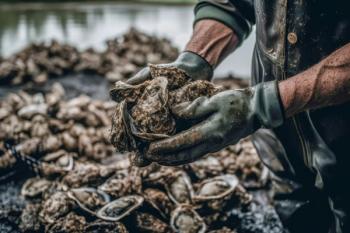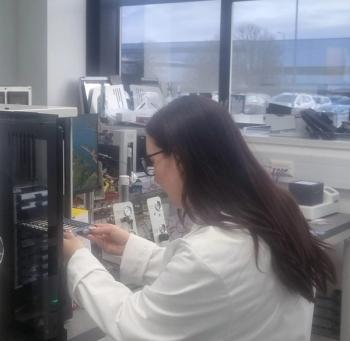Key Points:
- By combining hydrophilic interaction liquid chromatography with reversed-phase chromatography and high-resolution mass spectrometry, researchers identified 79 polar phenolics—including 25 compounds never before reported in cannabis.
- Distinct phenolic profiles across three cannabis strains, particularly the unique presence of flavone C-glycosides and flavoalkaloids in strain C, demonstrate the strain-dependent chemical diversity and the need for targeted metabolomic approaches in cannabis research.
- The tentative identification of rare flavoalkaloids—compounds combining flavonoid and alkaloid structures—for the first time in cannabis suggests previously unexplored biosynthetic capabilities and opens new avenues for understanding the plant’s therapeutic potential.
In a recent study, a team from the University of Stellenbosch leveraged comprehensive two-dimensional liquid chromatography (LC×LC) hyphenated with high-resolution mass spectrometry (HRMS) to provide characterization of polar phenolics in cannabis. The study was published in the Journal of Chromatography A (1).
While phytocannabinoids dominate cannabis research due to their psychoactive and therapeutic effects, the role of polyphenols—especially flavonoids—has received little attention. These compounds play a role in the plant’s potential health benefits, including its antioxidant, anti-inflammatory, and antimicrobial effects. Fewer than 40 flavonoids have been reported in cannabis to date (2). Given the metabolic diversity of cannabis and the limitations of conventional one-dimensional LC, the team had an opportunity to apply alternative separation techniques to uncover additional phenolic constituents. To meet this challenge, they developed an optimized hydrophilic interaction liquid chromatography and reversed-phase liquid chromatography (HILIC × RPLC) method, incorporating diode-array detection (DAD) and HRMS. They analyzed both inflorescence and leaf material from three commercial strains grown in South Africa. Extraction protocols were tailored to enrich polar phenolics while excluding cannabinoids and lipophilic interferences. Samples were defatted with hexane, then extracted with aqueous acetone. The resulting extracts were filtered and injected directly into the LC×LC system.
Contour plots derived from DAD detection revealed broad compositional similarity between strains A and B, with strain C showing distinctive features. Visual comparison of 2D plots allowed for rapid differentiation of phenolic fingerprints across strains and plant parts.
A total of 79 compounds were tentatively identified using UV spectra, accurate mass data, and fragmentation patterns. The majority were flavone and cinnamic acid derivatives, with group-type separations in the 2D space aiding assignment. Notably, several compounds—particularly glycosylated flavones—were reported for the first time in cannabis.
The core flavonoids included glucuronide derivatives of apigenin, luteolin, chrysoeriol, and acacetin. Their diglycosylated derivatives, including rhamnosyl and glucosyl forms, were also identified. These derivatives showed predictable elution patterns, reflecting increasing polarity with glycosylation.
Strain C was distinguished by the presence of flavone C-glycosides such as orientin, vitexin, and cytisoside—compounds not observed in the other strains. These were accompanied by their corresponding O-glycosylated derivatives. The presence of these flavonoids only in strain C underscores the chemotypic diversity within cannabis.
One of the most significant findings was the detection of flavoalkaloids in strain C. Flavoalkaloids possess both a flavonoid and an alkaloid component and are relatively rare; they have not previously been documented in cannabis. Sixteen compounds belonging to four structural classes were observed primarily in leaf extracts. While full structural elucidation was not possible, high-resolution MS and fragmentation data supported the presence of flavoalkaloids analogous to orientin, vitexin, and cytisoside, linked to proline or pyrrolidine-like groups.
This study highlights the potential of online HILIC × RPLC–UV–HRMS for the characterization of complex plant phenolics, achieving a peak capacity above 3000 and high orthogonality (75%) for different classes of phenolics. A total of 79 phenolic compounds were tentatively identified, with 25 reported in cannabis for the first time. The team concluded that the pronounced variability between strains and plant parts underscores the importance of advanced chromatographic techniques for comprehensive phytochemical profiling.
References
(1) Muller, M.; de Villiers, A. Comprehensive Two-dimensional Liquid Chromatographic Analysis of Cannabis Phenolics and First Evidence of Flavoalkaloids in Cannabis. J. Chrom. A 2025, 1754, 466023. DOI: 10.1016/j.chroma.2025.466023
(2) Radwan, M. M.; Chandra, S.; Gul, S.; Elsohly, M. A. Cannabinoids, Phenolics, Terpenes and Alkaloids of Cannabis. Molecules 2021, 26, 2774. DOI: 10.3390/molecules26092774





